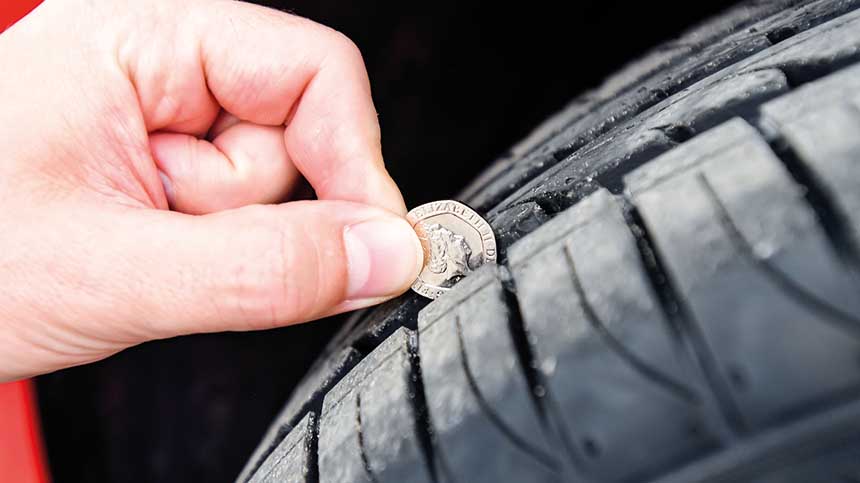Check your tyres, RAC and TyreSafe warn drivers

Analysis carried out by RAC and TyreSafe has found that drivers are risking fines and collisions by not regularly checking the condition of their tyres.
It found that only 39% of drivers know that the minimum legal tyre tread is 1.6mm, while a quarter of drivers (26%) only check tyre tread when they remember or before an MOT, and five per cent never do.
Just a third (33%) check tyre tread every month, with 17% checking every other month and 15% every six months.
The research also found that 48% said regular reminders would encourage them to check their tyres more regularly, although more than a third (34%) said nothing would get them to change their behaviour,
Fines of up to £2,500 can be issued for each tyre that does not meet the legal limit in terms of tread of inflation, with only 16% of respondents aware of this.
Check your tyres
RAC road safety spokesperson Rod Dennis said: “The latest official data shows 185 people were killed or seriously injured as a direct result of a vehicle having illegal, defective or underinflated tyres in 2023 – an increase of more than a quarter (26%) on the previous year. Add on those serious collisions where drivers have lost control, or where a slippery road has been a factor, and the number runs into the thousands.
“Checking tyre tread takes just moments yet doing so has the potential to save lives on the roads. Ensuring tyres are inflated to the correct pressures is just as important as checking the tread. Those pumped up too much can cause tread in the centre of tyres to wear down faster, while those underinflated is likely to lead to uneven wear around the edges.”
Chair of TyreSafe Stuart Lovatt added:
“It’s concerning to see some drivers don’t consider the importance of regular tyre checks. Despite the high number of tyre-related breakdowns and the very real risk of incidents, some motorists leave it to their MOT to take action or don’t check at all. By checking air pressure, condition, and tread at least once a month can significantly improve safety and avoid costly incidents.”






